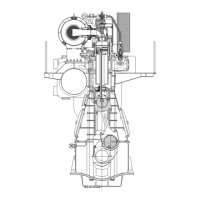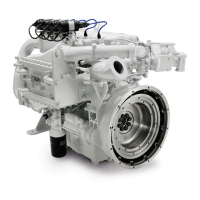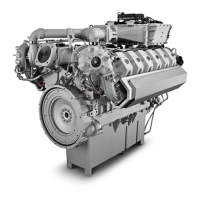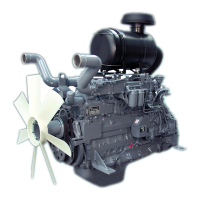Line : Propeller curve through matching point (O) layout
curve for engine
Line 2: Heavy propeller curve
fouled hull and heavy seas
Line 3: Speed limit
Line 3’: Extended speed limit, provided torsional vibration
conditions permit
Line 4: Torque/speed limit
Line 5: Mean effective pressure limit
Line 6: Increased light running propeller curve
clean hull and calm weather
layout curve for propeller
Line 7: Power limit for continuous running
178 52 256.0
Fig. 2.04.03: Extended load diagram for speed derated
engine with increased light running
Examples of the use of the Load Diagram
In the following are some examples illustrating the
exibility of the layout and load diagrams and the
signicant inuence of the choice of the matching
point O.
• Example shows how to place the load diagram
for an engine without shaft generator coupled to
a xed pitch propeller.
• Example 2 are diagrams for the same congura-
tion, but choosing a matching point on the left
of the heavy running propeller curve (2) provid-
ing an extra engine margin for heavy running
similar to the case in Fig. 2.04.03.
• Example 3 shows the same layout for an engine
with xed pitch propeller (example ), but with a
shaft generator.
• Example 4 is a special case of example 3, where
the specied MCR is placed near the top of the
layout diagram.
In this case the shaft generator is cut off,
and the GenSets used when the engine runs
at specied MCR. This makes it possible to
choose a smaller engine with a lower power out-
put.
• Example 5 shows diagrams for an engine
coupled to a controllable pitch propeller, with or
without a shaft generator.
• Example 6 shows where to place the matching
point for an engine coupled to a controllable
pitch propeller.
For a specic project, the layout diagram for actu-
al project shown later in this chapter may be used
for construction of the actual load diagram.
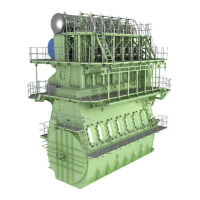
